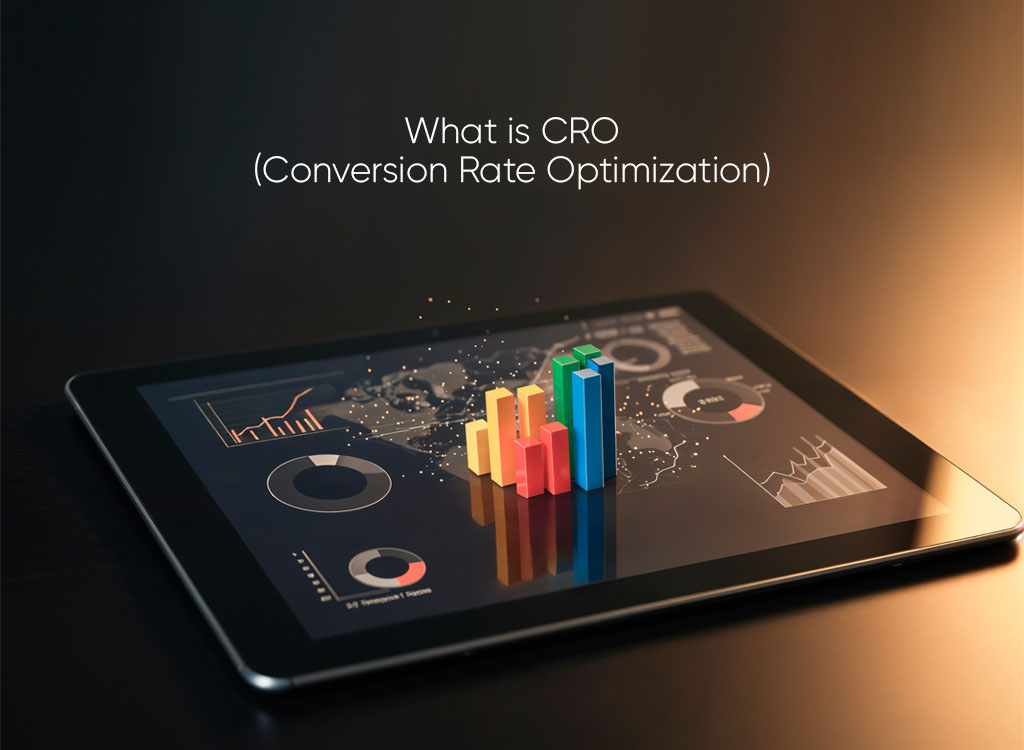What is CRO (Conversion Rate Optimization)

Did you know that you can be making more money in your sector of business by simply boosting your site with 1% conversion? It is the strength and beauty of conversion rate optimization (CRO), a new and inexpensive way to get more out of what you already have.
When it comes to getting more leads, closing more sales or getting more sign-ups, that is where the magic takes place in transforming casual visitors to active customers. That is where CRO comes in.
What Is CRO?
Let’s start simple. CRO's full form is Conversion Rate Optimization. It refers to the process of getting more people to take a specific action on your website, whether that’s buying a product, subscribing to a newsletter, filling out a form, or downloading an app.
So, what does CRO mean for your business? In short, it's about getting better results without needing more traffic.
Importance of CRO
The importance of CRO can't be overstated. It helps you:
- Get the best out of your current traffic (there is no need to overpay and get additional visitors)
- Increase the ROI of marketing programs
- Increasing the user experience to give visitors more chances to stay and act
- Increase the speed and intelligence of growth through decision data
In this digital age, CRO's meaning is not just a button tweak; it’s about really getting to understand your customers & building a better journey for them.
What Is the Best Conversion Rate?
A question that is frequently asked is “What is the good conversion rate”?
Although it varies depending on the industry, objectives and target audience, most companies experience an average of between 2 and 5 percent. It does not have a one-size-fits-all number, though.
The increased conversion rate is better than it was. Be too concerned with your improvement, not with that of your peers. Minor gains may have significant effects on the revenues in the long run.
Key Areas to Start Optimizing
These are the pages and sections that are going to have the biggest effect to get you started in optimizing your conversion rates:
1. Landing Pages
These are designed to convert, so everything, including headlines, design, etc., should be pointing to your CTA.
2. Product Pages
- Use good pictures to highlight.
- Make descriptions straightforward and oriented to benefits
- Add trust factors such as reviews and badges
3. Blog Posts
Convert readers to leads through embedded CTAs, newsletter documents, and product mentions that are natural.
4. Homepage
This is your first online impression. Leave no ambiguities in your message and tell users where to proceed.
5. Pricing Pages
Explain the pricing choices, incorporate frequently asked questions and foster credibility through testimonials or even money-back promises.
10 High-Impact CRO Strategies
1. Know Your Audience
Learn to gain insight into what your visitors truly need; use feedback, surveys and analytics.
2. Map Your Funnel
Observe the flow of visitors throughout your site to know where they stop and make improvements there
3. Use Heatmaps and Session Replays
See where users click, scroll, and get stuck. Then adjust your content or layout accordingly.
4. A/B Test Key Elements
Test versions of headlines, CTAs, images, and page layouts to see what gets more clicks or sign-ups.
5. Optimize CTAs
- Use action-driven words
- Test placement and colour
- Keep them short and clear
6. Improve Site Speed
Slow sites lose users. Aim for under 3 seconds of load time, especially on mobile.
7. Design for Mobile First
The majority of the shoppers are on mobile now. Make it easy to navigate and load quickly on a mobile device.
8. Show Social Proof
Add customer reviews, ratings, and real-time purchases to build trust quickly.
9. Keep Forms Simple
Only ask for essential info. Too many fields will scare users off.
10. Use Urgency (Without Pressure)
Short-term deals and time limits might be used to encourage users to perform the actions as quickly as possible.
Best Practices for CRO
Use these conversion rate optimization best practices to stay on the right track:
- Decide what each page is there to achieve.
- Try one change at a time
- Put data, not intuition, front and center of your plan
- Make CTAs visible and compelling
- Always design with mobile in mind
- Load pages fast
- Use upfront elements of trust like testimonials & reviews
Common Mistakes to Avoid
Avoid these common CRO mistakes:
- No clear conversion goal
- Ignoring mobile users
- Making too many changes at once
- Relying on opinion instead of data
- Confusing or cluttered layouts
- Weak or vague CTAs
Do You Need Conversion Rate Optimization Services?
These services typically include:
- Funnel and UX audits
- A/B testing management
- Content and CTA strategy
- Heatmap and analytics setup
- Regular reporting and recommendations
Final Thoughts
CRO (or conversion rate optimization) is all about doing more with the traffic you already have—purchases, sign-ups, or clicks. What is so important about CRO is that, first, it helps to scale your business effectively; second, it enhances the user experience; and third, it generates more ROI.
Start with simple improvements, such as having A/B tested CTAs, optimizing your mobile site, or adding testimonials, then add more on top. Continue with learning, testing and optimization.
FAQs
What does CRO mean?
CRO's meaning is Conversion Rate Optimization, improving how many visitors take action on your site.
Why Is CRO Meaning Important?
Knowing the CRO meaning helps you increase sales and leads without needing more traffic.
How To Use CRO in Strategy?
Apply CRO meaning by testing CTAs, improving pages, and boosting user experience.
